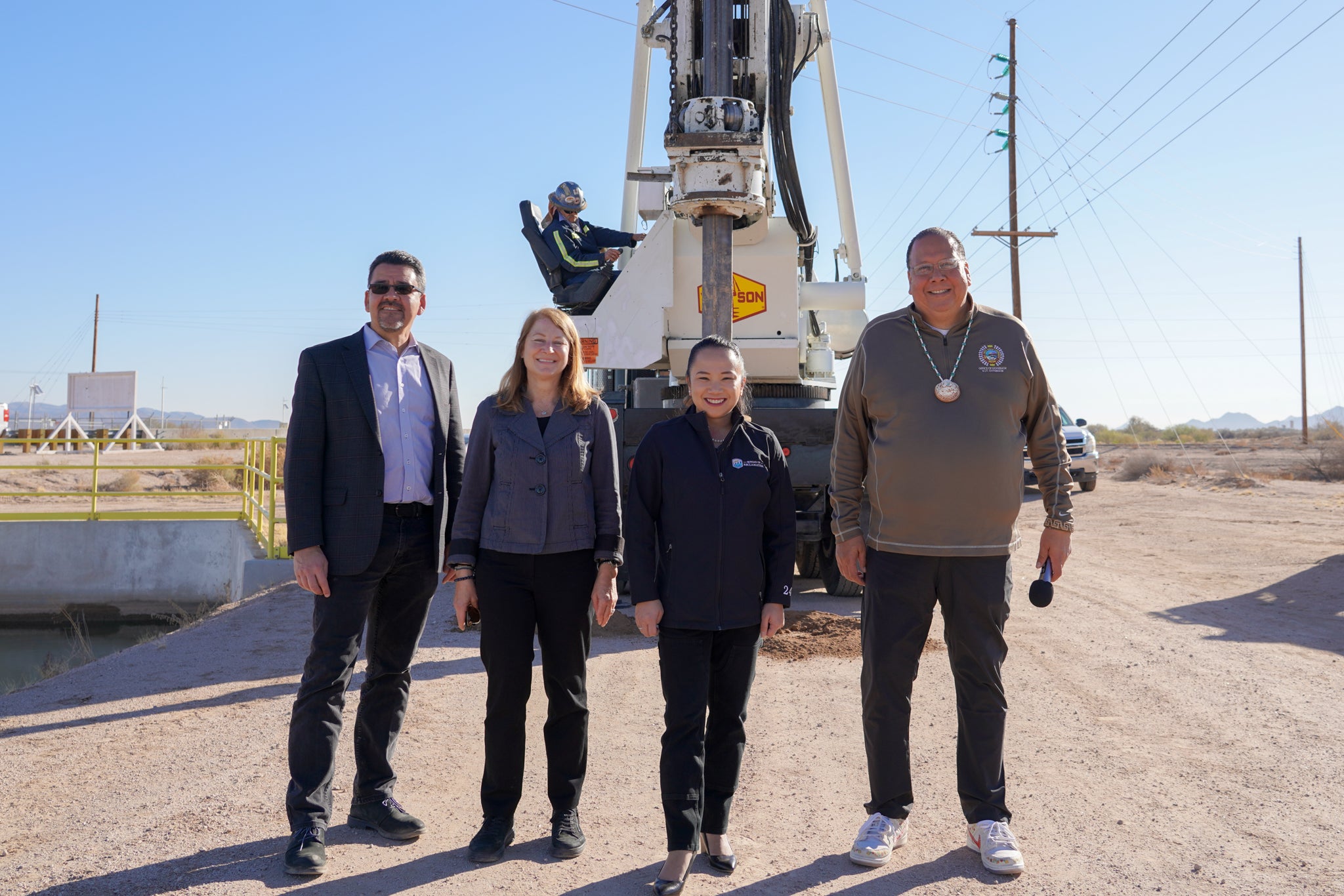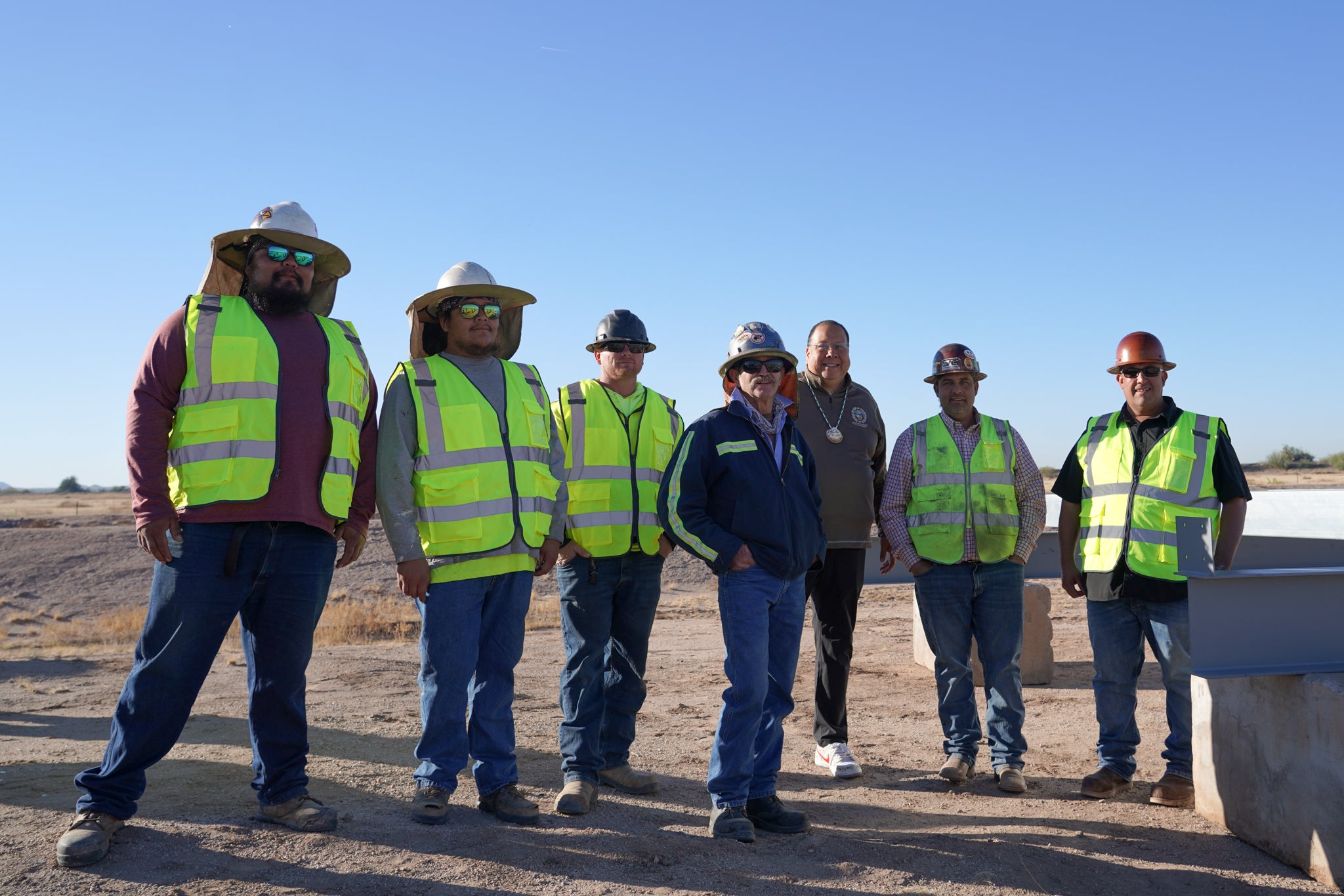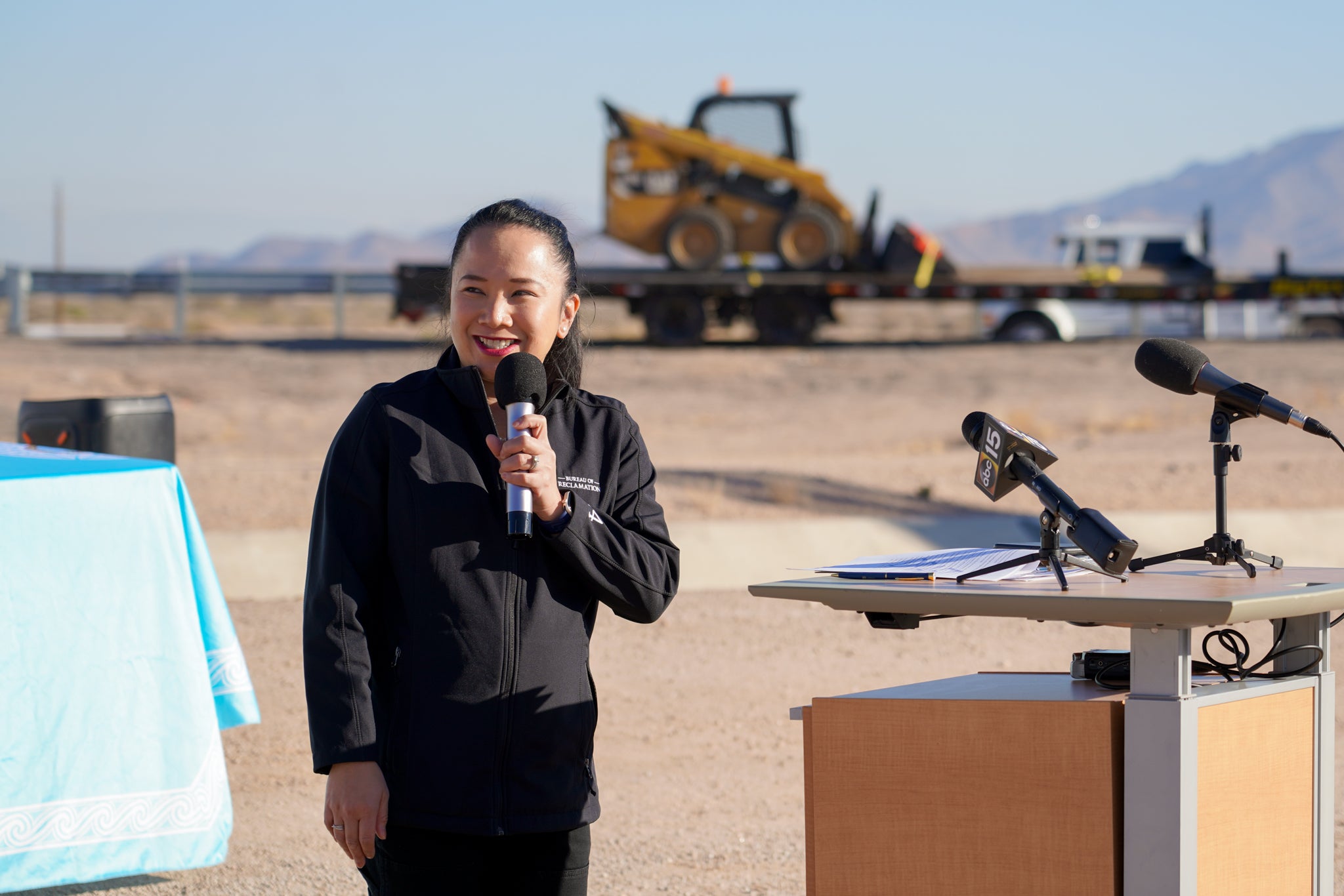Native American community breaks ground on historic clean energy project
The Gila River Indian Community will be the first in the US to construct a solar-panel-lined water canal, reports Katie Hawkinson


On Friday, the Gila River Indian Community, whose land is in what is now Arizona, made history — breaking ground on the first solar-panel-lined water canal project in the US.
“It’s an amazing opportunity to show that not just the Gila River Indian Community, but that a tribal nation can lead in water conservation and in generating green energy,” Stephen Lewis, governor of the Gila River Indian Community, told The Independent after breaking ground on the project.
Thousands of years of Gila River stewardship and decades of water rights activism came to a head as the Gila River Indian Community became the first in the western hemisphere and the second on Earth to begin construction on a solar-panel-lined water canal.
On the surface, this project is a breakthrough for green infrastructure in the US. The solar panel coverings will reduce water evaporation, while the water in the canals will cool the panels and make them more efficient in producing energy.
But the leaders of this project also say it’s also a major win for Indigenous sovereignty and water rights expansion, and presents an expansion of federal government assistance for green energy projects.
Learning From History
“[This project] reinforces and strengthens our ongoing connection to the Gila River,” Mr Lewis said. “This solar-covered canal project is part of that legacy.”
That legacy stretches back thousands of years.
The Gila River Indian Community have been stewards of the Gila River for millennia. The Huhugam people — a community formed after people from central Mexico joined ancient communities living along the Gila River in 300 BCE, becoming the ancestors of the Akimel O’otham, one of the tribes that makes up the Gila River Indian Community today — were expert farmers and built about 500 miles of canals fed by the Gila River.
The Akimel O’otham, also known as the Pima, welcomed the Maricopa tribe — who call themselves the Pee-Posh — in the 1840s, just decades before their collective access to the Gila River water would be interrupted by colonizers.
In the 1870s and 1880s, dams and upstream diversion structures constructed by non-Native farmers cut off the Akimel O’otham and Pee Posh peoples’ access to the river, which the Gila Indian River Community’s website calls their “lifeblood.”
“But, we proved resilient and eked out a marginal existence for several precarious decades,” the "History” page on the Gila Indian River Community’s website reads. “Conditions finally began to improve in the 1930s, when the U.S. government completed Coolidge Dam on the upper Gila River, creating the San Carlos Reservoir.

This new project represents continued innovation and stewardship of the Gila River, Mr Lewis said.
“I feel a sacred responsibility to make sure that our water rights are protected,” Mr Lewis told The Independent.
His father, Rodney Lewis, was the former General Counsel for the Gila River Indian Community and inspired his son tremendously.
Rodney Lewis was the first Native American to pass the Bar Exam in Arizona, and the first Native American attorney to appear before the U.S. Supreme Court, arguing his case (which he won) in front of Justice Thurgood Marshall. He was also the first Native American to serve on the board that oversees nearly half of Arizona’s Colorado River allocation, The Arizona Republic reported in their 2018 obituary.
“He fought to regain our water,” Mr Lewis said of his father.
“The torch was really passed to me from him and from our past leaders when I became governor,” Mr Lewis continued.
The project also presents a solution to the conflict between preserving Gila River Indian Community land and constructing solar panels for energy generation. Solar panel farms occupy large swaths of land, David DeJong, director of the Pima-Maricopa Irrigation Project and one of the leaders on this project, said. Building the panels on top of existing infrastructure allows the community to leave precious land undisturbed while still generating green energy.
“This fits with their values of being good stewards of the land, protecting the land and developing renewable energy sources to reduce the carbon footprint for not just the community but beyond,” Mr DeJong told The Independent.
“The tribal members rightfully see land as sacred,” Mr DeJong said. “If you can put solar over an existing facility, there’s no net effect of taking additional land out of production.”
Federal Resources Expanded
Planning and advocacy for this project began with the Gila River Indian Community seeking to partner with federal agencies for funding and resources.
One of the agencies Gila River Indian Community leaders approached was the US Army Corps of Engineers (USACE), an organization currently overseen by Michael Connor, Assistant Secretary of the Army for Civil Works.
But at the time, the US Army Corps of Engineers primarily focused on helping tribes with flood prevention and ecosystem restoration, according to USACE Tribal Liaison for the Los Angeles District Danielle Storey. Assisting with the construction of a solar-covered canal would have been out of the organization’s typical scope, Ms Storey told The Independent.
But that all changed when Mr Connor issued a memo in 2022 explaining he would expand approval of USACE projects to assist with “innovative, climate-resilient infrastructure.” Mr Connor’s decision to expand the scope of approved projections came, in part, thanks to the Gila River Indian Community approaching the USACE about their project, Ms Storey said.
After assisting the Gila River Indian Community with the planning stage of the project, the USACE signed an agreement last month to partner with the community to begin construction on the canal.
The construction has two phases, Mr DeJong told The Independent. The first phase will be overseen by the USACE and is expected to break ground in the coming months.
“Once the USACE finishes building it, we turn it over to the tribe and it’s theirs to own for the life of the project,” Ms Storey told The Independent.

The second phase, which broke ground on Friday morning, will be a 15-mile-long solar-panel covered canal. The Gila River Indian Community will undertake the construction, Mr Lewis said.
The project is funded, in part, by a $5.56 million allocation from the Bureau of Reclamation. The Bureau of Reclamation also assisted with feasibility studies in the planning stage of the project.
“We look forward to working with the Gila River Indian Community on this novel idea to conserve water and generate renewable energy with funding from President Biden’s Inflation Reduction Act,” Reclamation Commissioner Camille Touton said in a 8 December press release.
The Gila River Indian Community are the second people in the world to break ground on a project like this. The first to do so was the India-based engineering firm Sun Edison. In 2012, they constructed the world’s first solar-covered canal on a large irrigation project in India’s Gujarat state.
The firm initially planned to cover 11,800 miles (19,000 kilometers) of canals. However, only a handful of small projects ever went up before the organization filed for bankruptcy, the Associated Press reports.
Solar AquaGrid, a project development firm based in California, is also seeking to construct a solar-covered canal. Titled Project Nexus, the firm announced their plans in 2022 but they do not plan to break ground until spring of 2024, a spokesperson for the organization told The Independent.
Mr Lewis said he’s proud that the Gila River Indian Community can be trailblazers of green energy and water conservation.
“It’s the community that is stepping up here,” he said. “We’re trying to show best practices, and breaking ground was a historic first step in that direction.”
Join our commenting forum
Join thought-provoking conversations, follow other Independent readers and see their replies
Comments